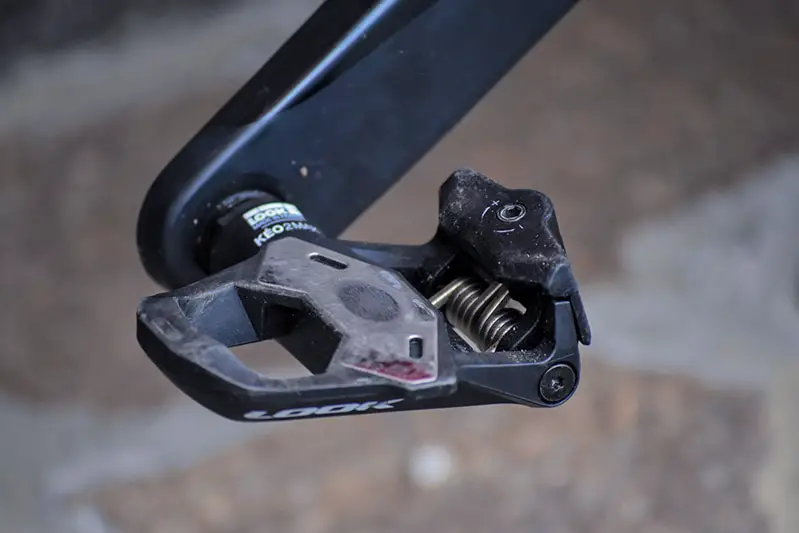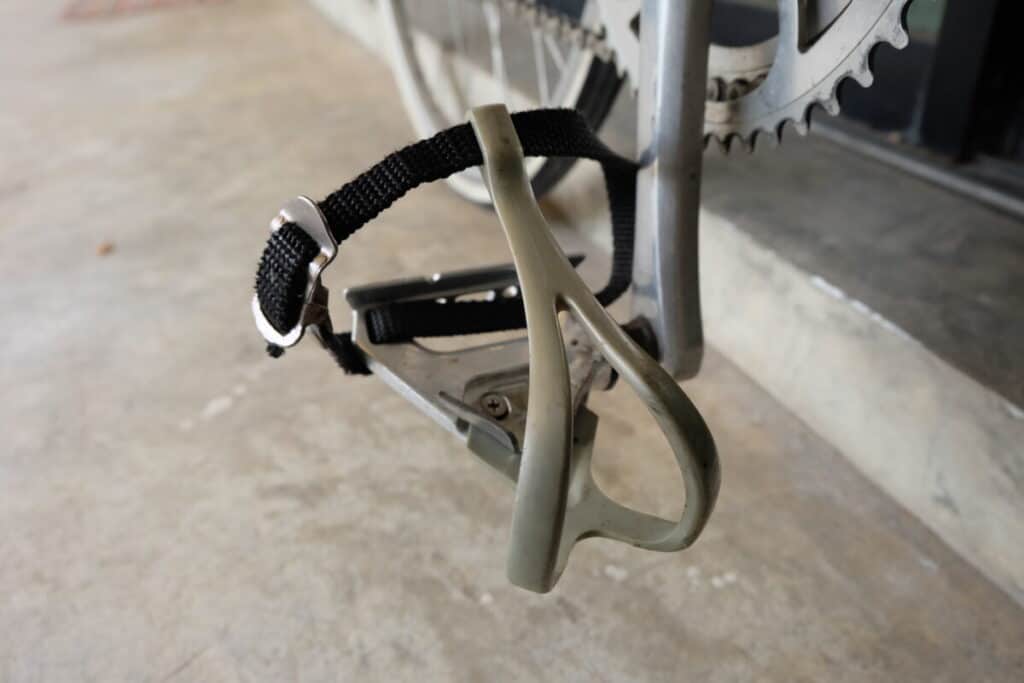There comes a time in every cyclist’s life when he asks himself why are clipless pedals called clipless. You clip into them, so how can they not have a clip? It defies all logic. But does it really?
Clip-in pedals are called clipless as they lack toe-clip and straps that were attached to previous types of pedals. The name emphasizes the main difference to prior types: lack of toe-CLIP. Cyclists eventually got used to the name, and it has stayed around to this day.
Pedals have evolved throughout history. Over time, each type has been upgraded as cyclists have looked for a solution to pedal more efficiently.
For a while, there was a fierce battle to see who could make the best pedals. In the end, it was a French company that took all the glory with the invention of the clipless pedal.
You clip into clipless pedals

Yes, I know. Why, just why would you clip into clipless pedals. It doesn’t make any sense. It’s the greatest contradiction in the world of cycling that raises every cyclist’s eyebrows when he first hears it.
After reading this article, you will see that the name is not as faulty as it might seem at first glance.
Is there a better name available? Definitely! But the current name is so embedded in the cycling culture that nobody needs the change anymore.
It’s like calling an automobile “horseless”
To really understand the origin of cycling’s greatest contradiction, we need to turn back the time to the previous century. There we’ll get the answer to what was happening before clipless pedals were first introduced and how did they change the cycling world forever.
Who invented clipless pedals?
The idea of clipless pedals isn’t as new as it might look. In 1895 Charles Hanson introduced the prototype pedals that allowed cyclists to lock and unlock a shoe from the pedals by twisting their foot. However, pedals never gained public admiration, and the idea was forgotten for almost 100 years.
In 1984, the French company Look (which is still one of the biggest cycling brands) took the technology from ski bindings and applied it to cycling pedals. The clipless pedals were born. ‘Step-in, Twist-out’ technology proved to be a hit, and every other major brand soon followed the example.
In the mid-80s, Look sponsored one of the biggest teams in the peloton – La Vie Claire. It featured two of the greatest cyclists of all time, Bernard Hinault and Greg LeMond. As mega superstars, they were perfect for promoting new technology of clipless pedals.
With Hinault’s victory in the 1985 Tour de France, the pedals proved their superiority.
The exposure at Tour de France was obviously huge, and I like to believe the Look marketing team was laughing and high-fiving for the whole three weeks the race was on.
For other cyclists, it took longer to say goodbye to toe-clips and switch to clipless pedals. Nevertheless, the number of users grew year by year, and by the early 1990s, everyone was using clipless pedals.
What types of pedals were used before clipless?
Before clipless pedals were invented, two other types were established. One of them is still around to this day, while the other is almost extinct.
Platform pedals

Bicycles were initially equipped with a platform or flat pedals that are still popular today. Your first bike had them, and you probably still find them on your everyday bicycle. They have stood the test of time and will be around for many more years.
However, they have a few problems. First and foremost, they don’t fixate your foot to the pedal, which causes you to waste your power. That’s not a problem for a commute. But when you are racing, you want to make sure you use every watt of power efficiently.
So a new type was invented.
Toe-clip pedals

Add a ‘cage’ and a strap to the platform pedal, and you got yourself a toe-clip pedal. ‘Cage’ or toe-clip is attached to the front of the pedal. It prevents the foot from sliding forward, while straps take care of side movement.
Professional cyclists quickly recognize the benefit of toe-clip pedals. If you look at the photos from the first Tour de France, which took place in 1903, you can see that the riders were already using toe-clip pedals.
For almost 90 years, toe-clips were the primary choice of professional cyclists until clipless pedals took over in the mid-80s.
However, toe-clips did have one major flaw. You have to loosen the strap to take your foot out. Most of the time, that’s not a problem. Until you crash.
If you are lucky, the foot will pop out mid-fall, but if you tighten them too much, that might not be the case.
Should clipless pedals be renamed?
Open any forum with a topic about clipless pedals, and you will soon come across a person who will call the name stupid and start a petition to rename them.
Most cyclists agree that the name is a misnomer, but they also point out that it has caught on, and renaming wouldn’t make sense. We all know what type of pedals we talk about when we mention clipless pedals.
Clips, clip-in pedals, lock pedals… Call them what you like, we’ll know what you’re talking about!
Many languages already use a more appropriate term. Germans call them Klickpedale, which translates to click pedals. The French use the term pedales automatiques, meaning automatic pedals. Other (European) languages just call them to lock pedals or something similar.
Changing the name worldwide is also a challenging thing to do. Once people take the word for their own, it takes a lot of effort to replace it. And nobody would really gain anything from officially changing the name to clip-in or lock pedals.
I agree that better name options were available when clipless pedals were invented. Strapless is one example, as straps were actually removed from the new type of pedals, opposed to clips.
But at the end of the day, I don’t lose any sleep knowing that the name will be around for a long time. And neither should you. If it bothers you so much, just call them clips.

